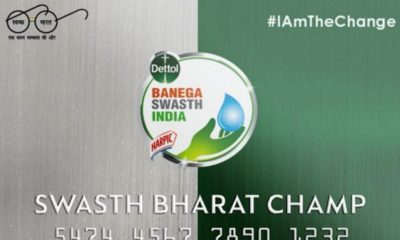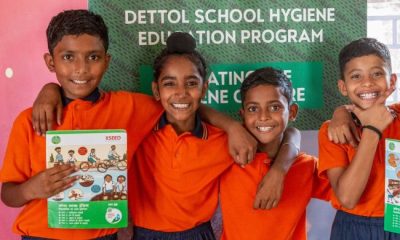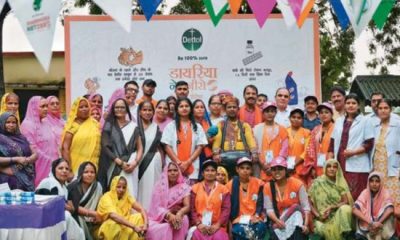Highlights
- RT-PCR test has a high specificity rate; gives less false positives
- Only nasopharyngeal swabs are collected for Rapid Antigen Test
- RAT has moderate sensitivity, can give false negative results for COVID-19
New Delhi: Testing for Coronavirus has been ramped up in India from 2.07 lakh tests on June 24 to over 4.08 lakh tests per day on July 28 and 6.19 lakh samples tested on August 4. Rapid Antigen Tests (RAT) has helped in a substantial increase in testing in the country and especially in the national capital Delhi. In a media briefing on August 4, ICMR Director General Dr Balram Bhargava informed that 25-30 per cent of the tests conducted are RAT. However, it’s a known fact that RAT can give a high number of false negatives. Recently, Delhi High Court pulled UP the AAP government for choosing Rapid Antigen Testing (RAT), as the primary test of COVID-19 infection over RT-PCR (Reverse transcription-polymerase chain reaction) which is considered as the gold standard for testing.
NDTV spoke to experts to understand the two main kinds of tests for COVID-19 diagnosis – RT-PCR and RAT and their reliability.
According to Dr Navin Dang, founder of Dr Dang’s lab in Delhi, all the tests available in the market for testing of COVID-19 have their own pros and cons but RT-PCR remains the gold standard for testing. Explaining the process of RT-PCR test, Dr Dang said,
This is performed by taking swabs from nasal and oral tracts which are then put in viral transport medium and brought to the lab. It is processed under bio safety level 2 plus facilities; we do RNA (Ribonucleic acid) extraction to detect the presence of the virus.
RT-PCR test has a specificity rate (ability to identify those without the disease) of nearly 100 per cent whereas the sensitivity rate (ability to identify those with the disease) of about 67 per cent. This means, RT-PCR test will not give false positives but there are 30-35 per cent chances of getting false negatives. Explaining the reason behind the low sensitivity rate and why is RT-PCR test still considered the gold standard for testing, Dr Dang said,
There are three main reasons, one, the technology itself which we cannot consider as a limitation. Secondly, if the samples are not taken properly then the result can be a false negative. This is the reason we take both nasal and oral swabs. Ideally, samples should be collected by experts who are trained to go to the nasopharyngeal or oropharyngeal cavity. Thirdly, people are now seeing it as a preventive test which means they are getting the test done even in the absence of symptoms. The average incubation period of SARS-CoV-2 is 5.6 days so an individual will test positive only after six days of contracting the virus. Undergoing a COVID-19 test at the initial stage when the viral load is very low can give negative results. Also, there is no other test that has got better sensitivity.
Also Read: Coronavirus Explainer: 20 COVID-19 Related Terms And What These Mean
At the initial stage of the Coronavirus pandemic, RT-PCR test was priced at Rs. 4,500 but now the cost has been brought down to Rs. 2,500. It is still expensive and takes a day to give results.
Talking about the time consuming process, Dr Harsh Mahajan, Founder of Mahajan Imaging and Chairman of CARINGdx, said,
In RT-PCR you can put 96 samples at a time so one has to wait for the samples to reach the laboratory and then process them. Less than 96 samples can be processed but it will increase the cost of testing.
As far as Rapid Antigen Test (RAT) is concerned, it is gaining grounds and has led to a spike in the number of tests being conducted, as it is quick and cheap. Only nasopharyngeal swabs are collected by trained healthcare workers. RAT detects the presence of viral proteins (antigens – attributes of the virus) in a sample from the respiratory tract of a person. However, it is capable of giving more false negatives. Explaining the same, Dr Mahajan said,
RAT has moderate sensitivity (around 50 per cent) and high specificity which means if you test 100 COVID-19 patients, it will give positive results for only 50 of them.
According to the ICMR protocol, if RAT gives negative result and an individual has symptoms of ILI (influenza like illness), then he/she should undergo RT-PCR test.
Also, RAT is a point of care test which means it can be performed only in hospital settings rather than standalone testing labs. Elaborating on this, Dr Dang said,
Sanctity of the test that is from the time sample is taken and is processed, is about 1 hour so it cannot be done at any collection centre. It is not possible to collect, label, transport and process the sample within one hour, even if it is collected within three to four kms from the lab.
If RAT does not provide standardised testing and results, why is India conducting RAT? Answering the question, Dr Dang said,
RAT has its own advantages in the way it can be done on a mass level. The numbers of tests that are being performed are in thousands now. The tests are being performed even in community centres, Gurdwara and other places. But too much of reliability on rapid antigen tests which shows a lot of false negatives is a questionable thing and I think the government may have to reconsider it. Right now, the number of people asking for a test is high and the number of RT-PCR tests labs are being able to provide is not that great.
Explaining how a government should increase testing with RAT and at the same time ensure it doesn’t miss COVID-19 positive patients, global health expert Anant Bhan suggests a balance between RAT and RT-PCR test. He added,
If antigen tests are being used it needs to be backed by RT-PCR test and only then we can say that yes there has been a decrease in coronavirus cases in that particular area. If the numbers of both the tests are not matching then it is a serious issue and it may reflect a bad picture.
Mr Bhan recommends all states to ramp up testing by not only increasing the number of rapid antigen tests, but also backing it by RT-PCR tests.
Also Read: Coronavirus Crisis: Community Transmission Taking Place In India, Here’s What Experts Have To Say
NDTV – Dettol Banega Swasth India campaign is an extension of the five-year-old Banega Swachh India initiative helmed by Campaign Ambassador Amitabh Bachchan. It aims to spread awareness about critical health issues facing the country. In wake of the current COVID-19 pandemic, the need for WASH (Water, Sanitation and Hygiene) is reaffirmed as handwashing is one of the ways to prevent Coronavirus infection and other diseases. The campaign highlights the importance of nutrition and healthcare for women and children to prevent maternal and child mortality, fight malnutrition, stunting, wasting, anaemia and disease prevention through vaccines. Importance of programmes like Public Distribution System (PDS), Mid-day Meal Scheme, POSHAN Abhiyan and the role of Aganwadis and ASHA workers are also covered. Only a Swachh or clean India where toilets are used and open defecation free (ODF) status achieved as part of the Swachh Bharat Abhiyan launched by Prime Minister Narendra Modi in 2014, can eradicate diseases like diahorrea and become a Swasth or healthy India. The campaign will continue to cover issues like air pollution, waste management, plastic ban, manual scavenging and sanitation workers and menstrual hygiene.
[corona_data_new]






























Medical Helper in Hindi
November 20, 2020 at 10:23 pm
I’m health worker and this information is very useful for me on What Is the Difference Between the RT-PCR Test and Antigen Test
Rapid PCR Test dubai
April 22, 2022 at 4:53 pm
Very interesting stuff to read.